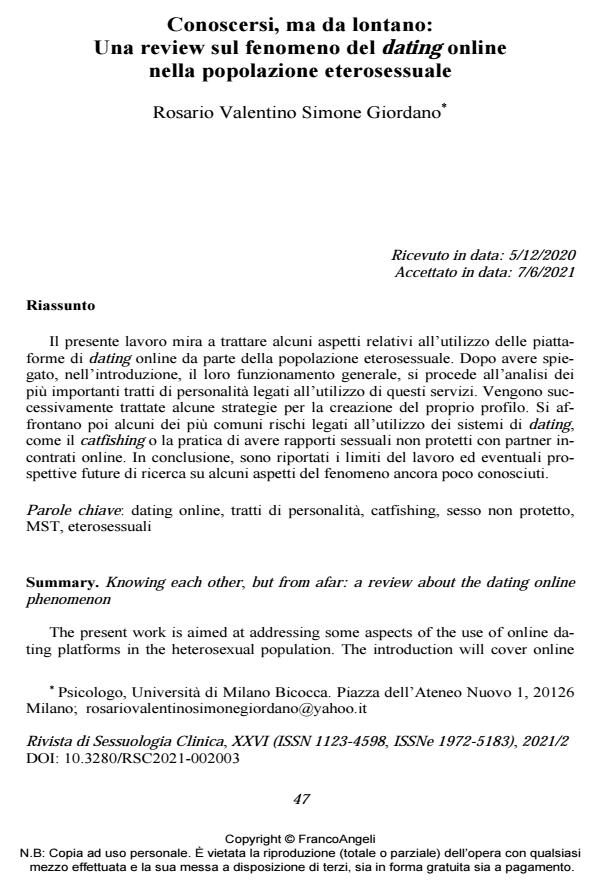Conoscersi, ma da lontano: Una review sul fenomeno del dating online nella popolazione eterosessuale
Titolo Rivista RIVISTA DI SESSUOLOGIA CLINICA
Autori/Curatori Rosario Valentino Simone Giordano
Anno di pubblicazione 2021 Fascicolo 2021/2
Lingua Italiano Numero pagine 19 P. 47-65 Dimensione file 214 KB
DOI 10.3280/RSC2021-002003
Il DOI è il codice a barre della proprietà intellettuale: per saperne di più
clicca qui
Qui sotto puoi vedere in anteprima la prima pagina di questo articolo.
Se questo articolo ti interessa, lo puoi acquistare (e scaricare in formato pdf) seguendo le facili indicazioni per acquistare il download credit. Acquista Download Credits per scaricare questo Articolo in formato PDF

FrancoAngeli è membro della Publishers International Linking Association, Inc (PILA)associazione indipendente e non profit per facilitare (attraverso i servizi tecnologici implementati da CrossRef.org) l’accesso degli studiosi ai contenuti digitali nelle pubblicazioni professionali e scientifiche
Il presente lavoro mira a trattare alcuni aspetti relativi all’utilizzo delle piatta-forme di dating online da parte della popolazione eterosessuale. Dopo avere spie-gato, nell’introduzione, il loro funzionamento generale, si procede all’analisi dei più importanti tratti di personalità legati all’utilizzo di questi servizi. Vengono successi-vamente trattate alcune strategie per la creazione del proprio profilo. Si affrontano poi alcuni dei più comuni rischi legati all’utilizzo dei sistemi di dating, come il cat-fishing o la pratica di avere rapporti sessuali non protetti con partner incontrati on-line. In conclusione, sono riportati i limiti del lavoro ed eventuali prospettive future di ricerca su alcuni aspetti del fenomeno ancora poco conosciuti.
Parole chiave:dating online, tratti di personalità, catfishing, sesso non protetto, MST, eterosessuali
Rosario Valentino Simone Giordano, Conoscersi, ma da lontano: Una review sul fenomeno del dating online nella popolazione eterosessuale in "RIVISTA DI SESSUOLOGIA CLINICA" 2/2021, pp 47-65, DOI: 10.3280/RSC2021-002003